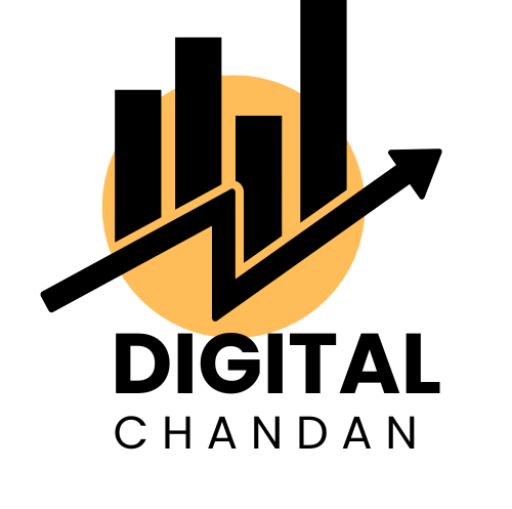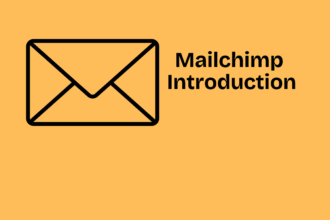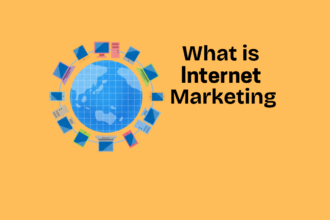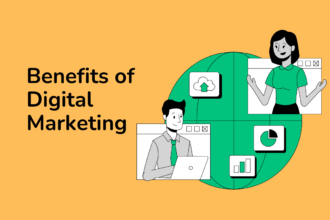image
They will come if you build it.”
You will have a hard time bringing traffic to your Site If that’s your approach to content marketing.
For your Digital Marketing Strategy Creating high-quality is important for your marketing strategy. Until you have a Content Optimization strategy in place that will drive search traffic it will not bring organic traffic or even drive organic search traffic.
In this blog, we will provide how can you make SEO – optimized content which will help you get and make website visitors.
Let’s deep dive into it.
What Is an SEO – Optimized Content Strategy?
The process of making content to attract traffic from search engines by picking out specific
search keywords is known as Search Engine Optimization. A strategy of content optimization
consists of the steps and process to make Content that is SEO – optimized.
Why do you need a Content Optimization Strategy?
Google Search is the most consistent, reliable, and high-quality traffic origin present on the internet. 68% of all online experiences start with a search question Research Shows that.
image
You can attract highly relevant visitors interested in your service or products, and open traffic floodgates to your Websites by having a Content Optimization Strategy in place.
How Content Optimization Works
Creating content in any niche and keywords your target audience is finding or searching for so it ranks higher in Search Engines Like Google or Bing is the core idea behind content optimization. The more traffic your website will get the higher you rank in Google’s SERP (Search Engine Result Page).
75% of searchers never go past the first-page research indicates this thing. The top-ranking results on the 1 page of SERP will often be 25 % of the clicks.
image
With the help of various tools of Content Optimization, you find high-traffic and relevant keywords. For instance, if you are targeting a project management tool, you could target a keyword like “project management for startups.”
If you optimize for this keyword, this will help determine Google Search what your page is about.
“Google will show your website among the search results, when a user searches for “project management for startups”, depending on how efficiently you have optimized your pages.
Types of SEO Content Optimization
You need to cover all surfaces of optimization to build a comprehensive content optimization strategy for SEO.
Let’s explain in more detail:
On-Page Content Optimization
On-page SEO content optimization contains making high-quality content that is based on your Website on the question of your target niche or target market. After you have created it, you will optimize it with the help of on-page SEO strategies, which will include the page title, meta description, Url, headlines, images, and body content optimization.
Content Optimization for Backlinks
After high-quality content backlinks are the second most important ranking factor in the search engine. Creating Content using so many elements which attract backlinks is known as Backlinks.
You will struggle to talk to someone it other websites to link to it if you do not optimize your backlinks for content. Google considers the number of quality backlinks as the primary ranking factor. As a result, rketingyour websites will not rank for your target keyword.
Content Optimization for Conversions
The main purpose of content ma is to bring visitors and turn them into leads, customers, and brand subscribers. You need to optimize your content for conversion to achieve this goal.
The more subscribers you will get the longer someone stays on your Website. It is also an important factor in ranking. The better your rankings on SERPs the more someone spends time on your Website.
The different types of Optimization Include –
(i) CTA (Call to Action) in your Content
(ii) Leveraging different lead generation tactics.
11 Steps to Building a Strategy of Content Optimization
Let’s dive into some of the practical strategies you can use to optimize your content for SEO. After you understand the basic concept behind content optimization.
(1). Perform Keyword Research
The Foundation of a content optimization strategy is keyword research. iteFind high-traffic and relevant keywords around which you can make your content is the main aim of keyword research.
You need to find keywords for all the stages of the funnel of content marketing to comprehensively cover your topic and build your web search authority in your niche.
(i.) TOFU (Top of the funnel) stage – Find information keywords and navigational for this stage which drives traffic to your Website and describes your problem.
(ii.) MOFU (middle of the funnel) stage: Find keywords that are commercial for this stage which target keywords for this stage which target who solve problems are exploring different products.
(iii) BOFU (Bottom of the funnel) stage: Find keywords that are transactional for this stage that targets the interest of users in buying your product.
(2). Create Topic Clusters
You need to organize relevant keywords in topical clusters once you find them.
A closed group of keywords that describe the same topic from different angles is known as a topical cluster. These keywords are linked to pillar content which is also known as a common hub page that covers the core topic in complete detail.
For instance, if your keyword is “running shoes”, the hub page could be “The Ultimate Guide to Buying Running Shoes.” For the hub page, the keyword could be:
(i) Running shoe types
(ii) Running Mistakes
(iii) Running Tips
(iv) Running Exercises
(v) Running Shoe problems
Making these topical clusters will allow you to rank higher for your target keywords and build niche authority.
- Develop Content Benchmarks
It’s time to make your Content benchmarks by analyzing your competitors so you know your target keywords. With the help of content benchmarks you can determine you length, quality, type, and nature intent of your content.
Search for your target keywords and Open the top 10 ranking pages in different tabs to develop content benchmarks.
Do write down the following details about them :
(i) Word Count
(ii) The no. of videos and image
(iii) External Links and Total internal
(iv) Keyword usage in the headline and content’
(v) Keyword variations in the content
(vi) Search Intent (what does it help the user achieve)
(vii) Content type (list post, guide, tutorial, buying guide, informational, comparison, etc.)
To guide your Creation of the content process use these benchmarks.
For example – your target word count should be 2,000 – 2,500 words if the average word count of the top-ranking pages for your target keyword is 1,200 words.
In the same manner, maximizing the no. of videos, images, and external and internal links. Use the content type, Search intent, and variations of keywords to guide your content writing process.
- Optimize Page Title, URL, and Headlines
The process of optimizing the page title, URL, and headlines is known as on-page SEO. Here is how you can do it.
(i) Title: In early in the title use your target keyword.
(ii) URL: URL with your target keyword Use a short (two-t three-word).
(iii) Headlines: Use variation and the target keywords in the first 3 heading tags H1, H2, and H3 once.
- Optimize Page Meta Description For Conversions
Convince searchers to click on your page in Google Search results is the main role of the meta description. So always write a description that is persuasive intrigues the searchers and gets them interested in your content.
- Optimize Image and Multimedia Content
Videos, Images, and other multimedia forms play an important role in creating your content more than appealing and reader keeping longer on your Website.
Always try to use SS (Screenshot), images, and one relevant video at least when making content. By using your target keywords as the alt text optimize your images and SS (Screenshots)
- Optimize the Content Body
Begin your Content with an introduction which should be a persuasive and engaging paragraph that keeps the readers in the content. Use your target keyword at least once in the first 100-150 words to indicate your topic very early to optimize your content.
Use also variations and target keywords throughout naturally the content. In Google Search, you find your keyword’s variations.
At least use your keywords 100-200 as well use your target keywords. Do not worry about outdated concepts or keyword density.
- Use “People Also Ask” to bring more traffic
For most keywords, Google search results include a “People also ask”.
It includes the most questions which are very popular with your target audience about your niche and topic and gives you amazing insights on what your readers wanted to learn.
Use 4-5 questions that are relevant as headlines of H2 or H3 in your Content.
- Incorporate Internal and External Linking
Internal links help in transferring search authority and helping to higher your site rank. Use at least 4 or 3 internal links which are reliant on every page. The link also to the external sources to back your claims and make your content more credible.
- Format Your Content For Maximum Consumption
Content formatting helps readers to consume your content. This is how you should structure your pages.
(i) Use images, screenshots, and visuals.
(ii) Where needed Use bullet lists.
(iii) Use one-two-line or short paragraphs.
(iv) To highlight important text use bolding, italics, and underlines.
(v) With subheadings and heading distrib content.
(vi) Always write in a conversational tone.
- Add CTA (Call to action) to use your derive Conversions
After the introduction Use CTA (Call to Action), at the end of the page and in the middle of your content to make the readers your subscribers and then convert them into leads. Use also sliders, pop-ups, and other lead generation strategies to maximize conversions.
Tools for SEO Content Optimization
With the help of Content Optimization tools, you can :
(i) Find relevant keywords
(ii) Understanding search demand



